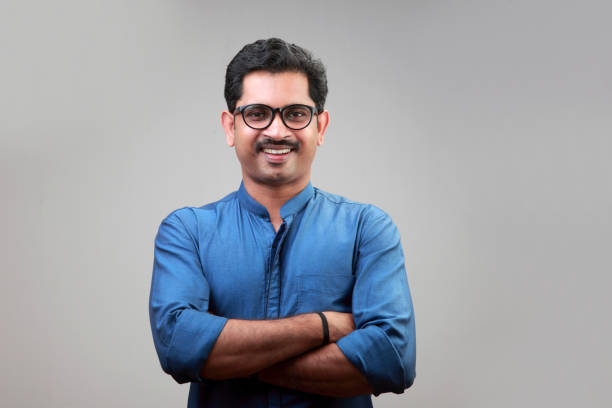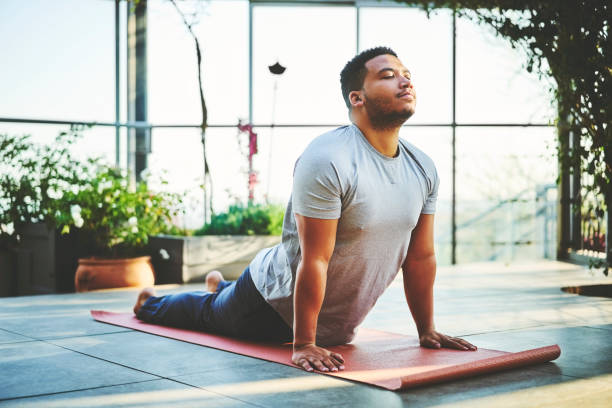
Heart disease continues to be one of the leading causes of health problems worldwide, affecting millions of individuals every year. For those who have experienced a heart attack or are living with heart conditions, managing heart health becomes a lifelong commitment. While medication, diet changes, and exercise are often part of the prescribed treatment, many people are now turning to holistic approaches to support their heart health.
This testimonial chronicles the inspiring journey of Rajesh Kumar, a 58-year-old heart patient who, after battling high blood pressure, high cholesterol, and a heart attack, found a transformative solution in yoga. Initially skeptical, Rajesh’s experience with yoga not only helped him regain his physical health but also brought balance and peace to his life, proving that yoga can be a powerful complement to traditional medical treatments.
Through his personal story, Rajesh highlights how a dedicated practice of yoga helped him manage stress, improve circulation, lower blood pressure, and regain strength. His testimony is a testament to the healing power of combining mind-body practices with conventional healthcare, offering hope and inspiration to others facing similar challenges.

Table of Contents
Story Of Rajesh Kumar:
My name is Rajesh Kumar, and I am 58 years old. I’ve spent the better part of my life struggling with various heart-related issues, and I’m here to share how yoga became the turning point in my journey toward better heart health. My story is one of persistence, change, and a shift toward a holistic approach to life. I hope it resonates with those who are dealing with similar challenges.
The Early Years: Struggling with Heart Health
I’ve always been a busy person, working long hours in the corporate world. For years, my health took a backseat to my career, and I didn’t pay attention to the signals my body was sending me. By the time I was in my early 40s, I had developed high blood pressure and high cholesterol, which were, I later learned, major risk factors for heart disease. I was overweight, had a sedentary lifestyle, and my diet was far from heart-healthy fast food, excessive caffeine, and stress from my work were constant companions.
At the age of 45, I had my first heart attack. It was a wake-up call, but unfortunately, I wasn’t ready to make the necessary changes. After the heart attack, I underwent a series of tests. An electrocardiogram (ECG) showed irregularities in my heart rhythm, and blood tests confirmed that my cholesterol levels were dangerously high. My cardiologist, Doctor, recommended immediate lifestyle changes. I was prescribed medication to manage my blood pressure and cholesterol, and my diet was overhauled with a focus on low-fat, low-salt foods.
Initial Attempts at Change:
Despite my doctor’s advice, I struggled to stick with the changes. I started walking regularly and tried to eat more vegetables, but it wasn’t enough. I’d feel better for a while, but the stress of my job would quickly undo the progress I made. I often found myself back at square one. The medications made me feel drowsy and fatigued, and though my blood pressure and cholesterol improved slightly, I wasn’t feeling any better overall.
Doctor continued to monitor my progress with regular check-ups, and although the numbers were improving, I wasn’t satisfied with the quality of my life. I knew something was missing. I needed a way to address the root causes of my heart problems, not just treat the symptoms. That’s when I began looking into alternatives, and that’s when I stumbled upon yoga.
The Discovery of Yoga: A New Path Forward
At first, I was skeptical. Yoga seemed like something for younger, more flexible people. I had never really done any form of exercise that involved stretching, and I couldn’t imagine how a practice centered on deep breathing and slow movements could help with heart health. However, after reading some articles about the benefits of yoga for heart patients, I became intrigued. Several studies had shown that yoga could help reduce blood pressure, manage stress, and improve heart function, so I decided to give it a try.
I spoke to the Doctor about my interest in yoga, and she was supportive, as long as I started with a gentle practice. She emphasized that yoga should complement my existing routine, nothing too intense at first. With her encouragement, I found a local yoga studio that offered classes for beginners and people with medical conditions. I was both nervous and hopeful as I walked into my first class.

The Early Stages: A Gentle Introduction to Yoga
The first few weeks were challenging. I had never practiced yoga before, and the idea of holding poses for extended periods was difficult, especially with my stiff joints and limited flexibility. But the instructor was incredibly patient. She guided us through the basics: gentle stretches, breathing exercises, and mindfulness practices. I started with poses that focused on gentle movements, like Supta Baddha Konasana (Reclining Bound Angle Pose) and Tadasana (Mountain Pose). Most importantly, we spent a lot of time practicing pranayama breathing exercises that help calm the mind and body.
I remember feeling a bit winded after the first few sessions, and I doubted whether this would have any real effect on my health. But then I noticed something subtle: I felt calmer. My anxiety, which had been a constant companion due to work and personal stress, started to decrease. I learned to focus on my breath and let go of the tension in my body. Yoga wasn’t just about the physical poses; it was about connecting to my breath, slowing down, and finding stillness in a chaotic world.
Medical Tests and Improvements: The Proof Was in the Numbers
After a month of practicing yoga regularly, I had my next follow-up with the Doctor. During the consultation, she noted that my blood pressure had improved, though I had not made any major changes to my medication. She also commented that my heart rate variability (a sign of how well my heart was responding to stress) had improved significantly. I told her about my yoga practice, and she was pleased, noting that the combination of controlled breathing, improved circulation, and stress reduction could be contributing to these positive changes.
Over the next few months, my cholesterol levels continued to stabilize. I felt more energized and less fatigued throughout the day. The sense of lightness and calm I had gained through yoga translated into my everyday life. I no longer felt as overwhelmed by work pressures, and I was sleeping better. I wasn’t just managing my heart health—I was actively improving it.
My regular medical tests also showed positive changes. My ECG readings were more consistent, and my heart function had improved, as seen in an echocardiogram. The doctor was pleasantly surprised by the progress I had made, particularly in how much stress had been alleviated from my body.
Yoga Becomes a Lifestyle:
At this point, yoga was no longer just a physical activity it had become a lifestyle. I practiced every morning for 45 minutes, focusing on a series of heart-healthy poses like Bhujangasana (Cobra Pose), Ustrasana (Camel Pose), and Setu Bandhasana (Bridge Pose), which helped open my chest and improve circulation. I also incorporated more breathing techniques like Nadi Shodhana (alternate nostril breathing) and Anulom Vilom, which helped calm my nervous system and reduce anxiety.
Over time, I noticed that my stamina increased, and I felt stronger. I was also more mindful of my eating habits, focusing on whole foods and heart-healthy meals. The connection between body, mind, and heart that yoga fostered became a central theme in my life. It wasn’t just about exercising it was about living mindfully, reducing stress, and giving my heart the care and attention it deserved.
Results and Reflections: A New Lease on Life
Today, my heart health is in a much better place. My blood pressure is within normal limits, and my cholesterol levels have remained stable. I’ve been able to reduce my medications under the guidance of my Doctor, and I feel more energetic and healthier than I have in years. Yoga has helped me regain control over my health, and I now have a deep understanding of the mind-body connection.
The greatest benefit I’ve gained from yoga, however, is the peace of mind that comes with it. I’m no longer consumed by stress or anxiety. I am more present in my life, more patient, and more aware of how to care for my body. My doctors continue to be impressed with my progress, and I believe yoga has played a major role in keeping my heart strong and healthy.
To anyone dealing with heart issues or high blood pressure, I highly recommend giving yoga a try. It may not be the cure-all, but it’s an invaluable tool that can help you manage your health in a deeper, more sustainable way. For me, yoga has not only improved my heart health, but it has transformed my entire approach to life.
Reference Articles:
- Yoga For Heart Health: 10 Yoga Asana And It’s Benefits
- The Yoga-Heart Connection
- Yoga: A flexible way to enhance heart health
- Yoga for Heart Failure: A Review and Future Research – PMC




